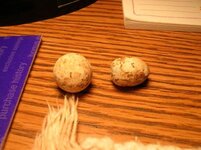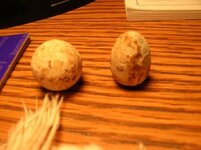JakePhelps
Silver Member
Found this yesterday while out detecting. It looks like a regular bullet, But it has no marks from where the cartridge is crimped on. If it was a minie ball wouldnt it have the grooves they usually have? Maybe it could be an early handmade minie ball made to be put into a musket? Any ideas?




 I dont think its smashed, it does look rather crudely made though. Could it have been handmade for a musket?
I dont think its smashed, it does look rather crudely made though. Could it have been handmade for a musket?




